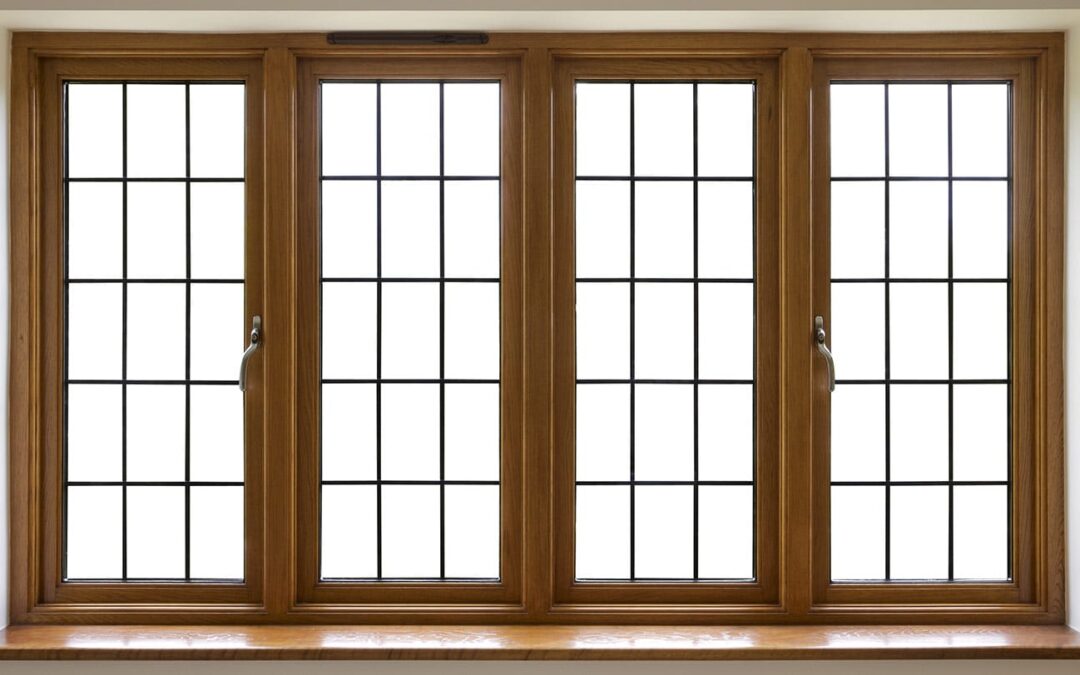Choosing the right window frame material is a crucial decision when it comes to home improvement or new construction projects. The frame material you select can significantly impact your windows’ durability, energy efficiency, maintenance requirements, and aesthetics. With various materials available in the market, making the right choice can be overwhelming. In this blog post, we will discuss the most popular window frame materials, their pros and cons, and the factors to consider when selecting the perfect material for your needs.
Popular Window Frame Materials
There are several window frame materials available, each with its unique set of characteristics. Let’s explore the most popular options and their benefits and drawbacks.
Wood
Wooden window frames have been a popular choice for centuries due to their natural beauty and insulating properties. They can be painted or stained to match your home’s exterior and interior design.
Pros:
- Excellent insulator, helping to reduce energy costs
- Can be customized with paint or stain to match your home’s décor
- Adds a warm and classic aesthetic to your home
Cons:
- Requires regular maintenance, such as painting or staining, to prevent rot and decay
- Can be susceptible to moisture, leading to warping or swelling
- Typically more expensive than other window frame materials
Vinyl
Vinyl window frames are made from polyvinyl chloride (PVC) and have gained popularity due to their affordability, low maintenance, and energy efficiency.
Pros:
- Low maintenance, requiring only occasional cleaning with soap and water
- Energy-efficient, providing excellent insulation and reducing energy costs
- Affordable and widely available
Cons:
- Limited color options, typically available only in white or beige
- Can become brittle and crack over time, especially in extreme temperatures
- Cannot be painted or stained, limiting customization options
Aluminum
Aluminum window frames are known for their strength and durability. They are lightweight, making them easy to install, and can be painted to match your home’s exterior.
Pros:
- Lightweight and easy to install
- Strong and durable, able to withstand harsh weather conditions
- Can be painted to match your home’s exterior
Cons:
- Poor insulation, leading to higher energy costs compared to other materials
- Prone to condensation, which can cause mold and mildew growth
- Can be more expensive than vinyl window frames
Fiberglass
Fiberglass window frames are a relatively new option in the market, offering excellent durability, low maintenance, and energy efficiency. They can be painted to match your home’s exterior and interior design.
Pros:
- Low maintenance, requiring only occasional cleaning with soap and water
- Excellent insulator, helping to reduce energy costs
- Resistant to warping, rotting, and corrosion
Cons:
- More expensive than vinyl and aluminum window frames
- Limited availability compared to other window frame materials
- Can be difficult to find a skilled installer familiar with fiberglass windows
Factors to Consider When Choosing Window Frame Material
When selecting the perfect window frame material for your home, consider the following factors:
Climate
Your local climate plays a significant role in determining the best window frame material for your needs. For example, wood may not be the best choice for homes in areas with high humidity levels or heavy rainfall, while aluminum may not be suitable for extremely cold climates due to its poor insulation properties.
Maintenance Requirements
Consider the amount of maintenance you are willing to commit to when selecting a window frame material. Wood requires the most upkeep, while vinyl and fiberglass are low-maintenance options.
Energy Efficiency
If energy efficiency is a priority, look for window frame materials that provide excellent insulation, such as wood or fiberglass. This can help reduce your energy costs and improve your home’s overall comfort.
Aesthetics
The appearance of your window frames is an essential factor in your decision-making process. Consider the style and design of your home when selecting a window frame material, as well as the availability of customization options, such as paint or stain colors.
Budget
Finally, consider your budget when choosing a window frame material. Vinyl is typically the most affordable option, while wood and fiberglass tend to be more expensive. Keep in mind that investing in high-quality, energy-efficient windows may save you money in the long run through reduced energy costs and increased home value.
Selecting the perfect window frame material for your home involves considering factors such as climate, maintenance requirements, energy efficiency, aesthetics, and budget. By understanding the pros and cons of popular materials like wood, vinyl, aluminum, and fiberglass, you can make an informed decision that meets your specific needs and preferences. Ultimately, the right window frame material will not only enhance your home’s appearance but also contribute to its durability, comfort, and energy efficiency.

